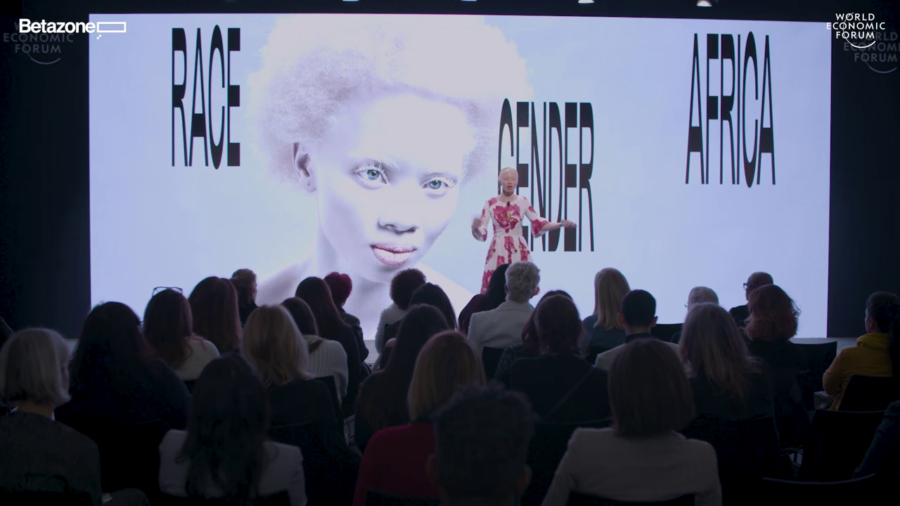Thando Hopa: So I’m going to tell you a little bit of a story. So, In the 1940s, two American doctors ran an experiment known as the “doll test.” So the scientists wanted to understand the impact of racial segregation and discrimination on African American children. The test was quite simple. Children would be called in and shown two dolls that look exactly the same, with only one difference: the doll color.
So, I received footage showing versions of this experiment and I watched as children who as young as five years old identified the dolls according to their racial perception. Now, one doll was identified as the black doll, and the other doll was identified as the white doll.
So questions directed to the children to reveal which qualities they thought each doll to have. Now, the question went something like this: Which doll is pretty? Which doll is ugly? Which doll is good. Which doll is mean?
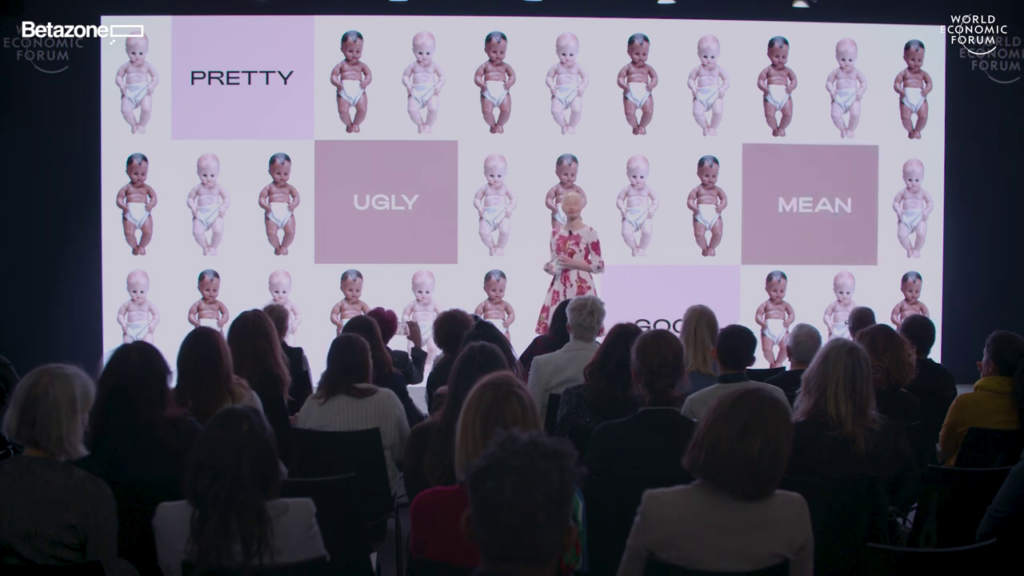
Now, the video displays children, despite their race, assign negative attributes toward the black doll, and positive attributes toward the white doll. And the questions went along this vein until the question was asked that brought us back to the impact of the study. And that is “Which doll looks more like you?”
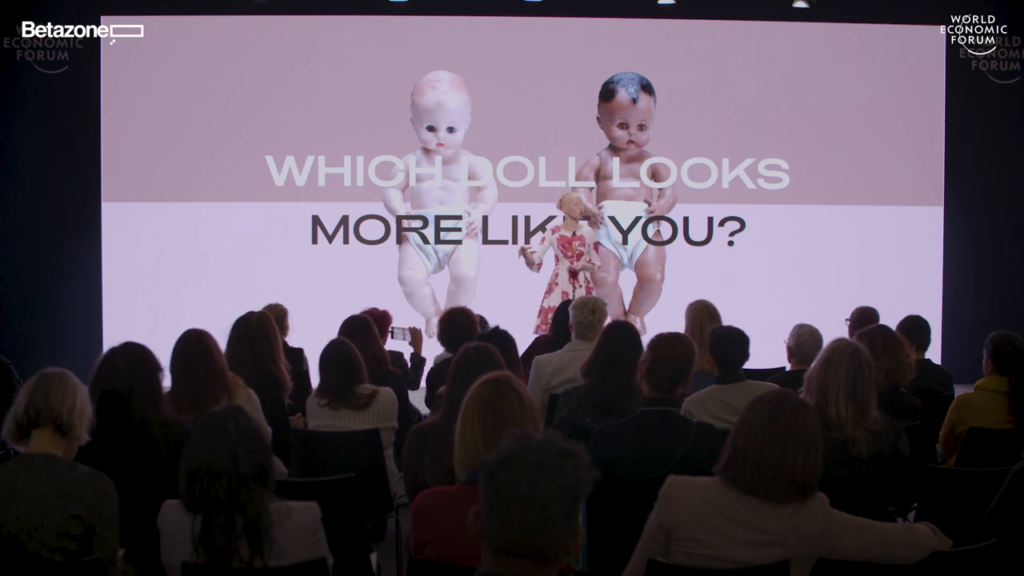
Now, I paused when this happened. Because two observations ran through my mind. The first one was watching the heartbreaking expressions on the faces of African American children as they painfully reached for the doll that looked most like them. It was the doll that they and most other children had assigned negative attributes toward. It was the doll that I identified with as a black woman.
Now the second observation. There were no African American children with albinism among the children who were being interviewed. So I started thinking about how I would have responded if I was one of those children.
Now, I identified with the black doll, yes. But that is mainly because it embodied my experience, but I was also quite aware that the white doll resembled my appearance, as a person with albinism on the basis of color. So for those of you who don’t know, albinism manifests in all races. It is a lack of pigmentation in the skin, hair, and eyes. And this means that for people of color with albinism we usually have bodies that contradict the dominant understanding of our race.
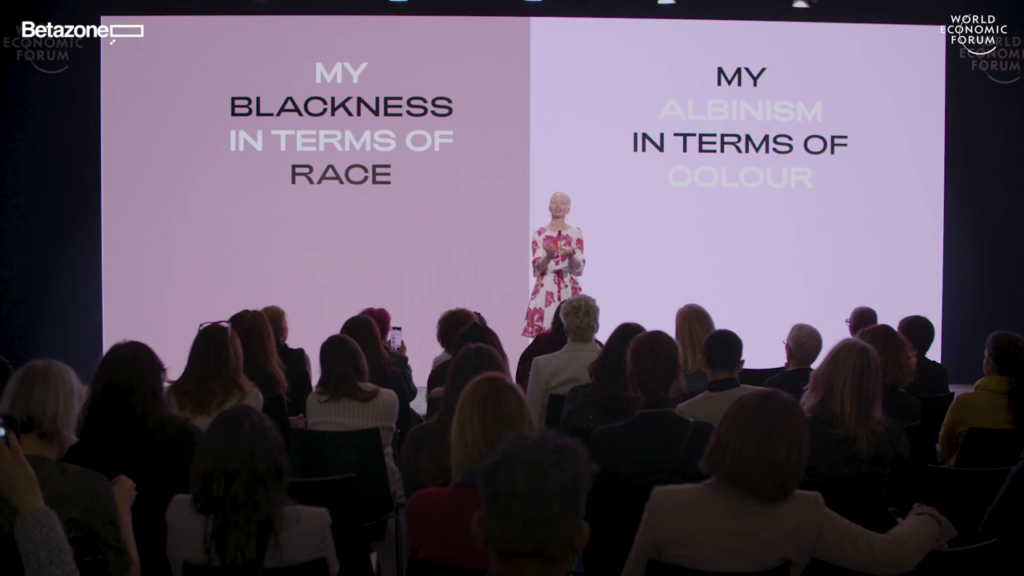
Now this experiment made me introspect on the two cultural and historical forms of racial discrimination that merged into my one body: my blackness in terms of race, and my albinism in terms of color. So African American children would be born within the intersection of race and albinism, placing them in a world between worlds.
Now, when I was born, my grandfather named me Umtana Wothando, which means “a child of love.” He was well aware that I was born into a body that spoke for itself, before I could speak for it. Now growing up I grew up in a community that was filled with diverse people of color, and I remember that when I was about six years old I viewed my first day of school as an exciting and scary adventure. I was so full of anticipation that my parents couldn’t contain the energy that was bursting out of my little body. And I think that gender was the only social stratification at this point that I knew.
However, like most children who are “different” in one way or another, school became an initiation ground. In that I was the only person in my school who did not have brown skin. And not only that, the lack of pigmentation that ran through my body—including my eyes—resulted in me being short-sighted, so I struggled to make out the words and numbers on the chalkboard as well as on my school books.
Now, the set of circumstances that my body found itself in was met with some antagonism from some of my peers as well as some adults. And I grew to understand that there was a whole institution that was culturally created about my existence. From derogatory names in almost all sub-Saharan African languages, to a formalized English term which some of you might know. The term “albino.”
Now according to the Oxford Dictionary, albino means “a person or animal with a congenital absence of pigment in the skin and hair, which are white, and eyes which are usually pink. Now apart from other issues with that definition, I need to mention that as a black person, I have in my racial history a sore spot that is reignited when ever my existence is described on the same wavelength as you would an animal.
So albinism is no different for me. So for clarity my preferred terminology is “person with albinism,” not albino. But the plot does thicken for albinism. In that in certain contexts I’ve been subjected to superstitious beliefs; to negative scientific interpretations that described it and labeled it as a genetic disorder, or a congenital disease; to cinematic misrepresentations that portrayed it as a freak of nature, or as evil; to almost no representation in the beauty economy at the time. So as a young woman, I was living in a culture that was built up to dismiss marginalized and discriminate against my kind of human experience. Albinism was culturally created to being an institutionalized other.
Now, all this socially-constructed madness told me that we as a society struggle to see difference as part of human diversity be it race, gender, sexuality, or be it albinism. The patterns of othering were undeniably similar. But, my life went on with a semblance of functionality. And I went through many lived chapters in my life. And I landed on one strange but enlightening chapter, which I locate in my adult life.
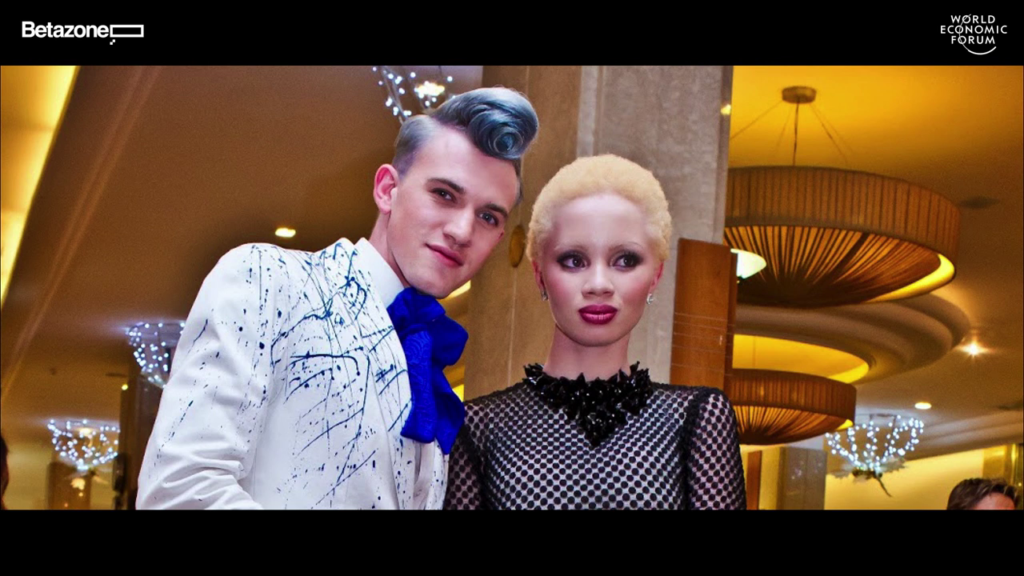
So the year was 2012. And I met designer Gert-Johan Coetzee, who’s a fashion designer. I was a full-time prosecutor at the time, and he asked me to do a fashion shoot for his campaign. Now, I was reluctant to say the least. And I remember I had this conversation with my sister and I told about the ridiculous prospect of me being a model while being a lawyer. And she said in turn, she said, “You know, I don’t understand why you think this is such a ridiculous idea. Do you know how many perceptions you could change using this platform?” Now, I was unaware at the time that she was actually giving me a mission statement for the work that I was about to do.
So anyway, I reached out to Gert, and during our meeting I gave him the most matter of fact legal voice that was loaded with years of institutional baggage. I said, “Gert, I will do this modeling thing, provided that we represent albinism in a positive way.” Now, I was about to embark on a journey that would show me what an oversimplification that statement actually was.
So I completed my project with Gert. And I actually had fun doing the shoot. But the interest that the project generated from different industry players would help me quickly understand that this was not going to be an easy journey.
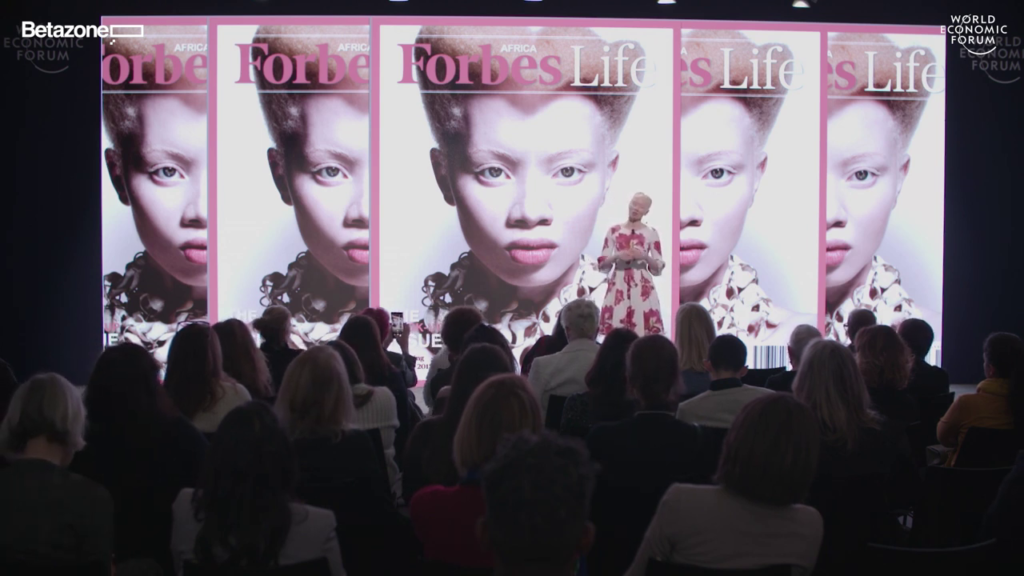
So I’m gonna take you to a year later, 2013. I have this amazing shoot with Forbes Life magazine. And this shoot actually documented a decision that would be a hallmark decision in my career. And that was to present my eyebrows and eyelashes as pale, believe it or not.
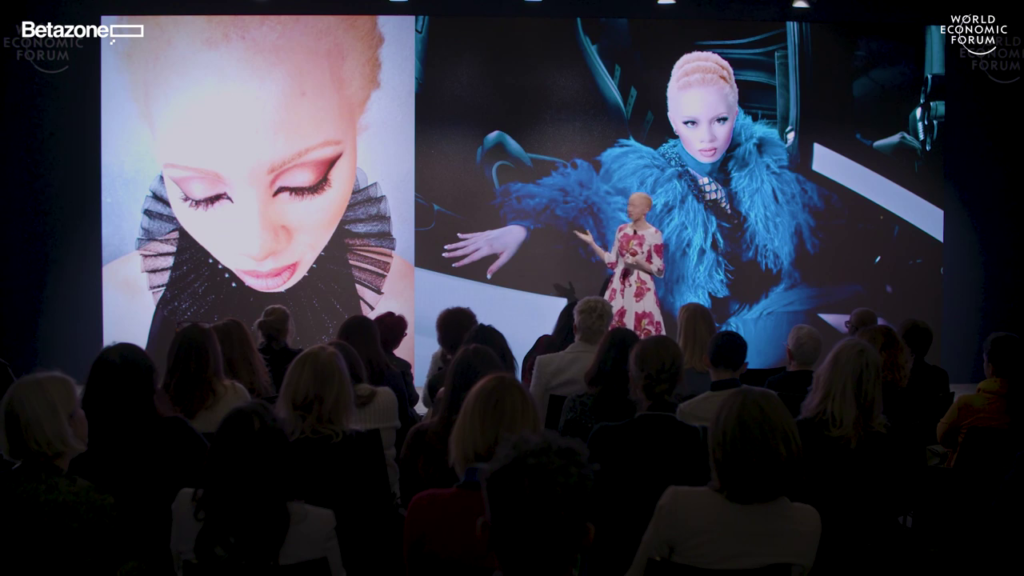
Now, I had always, always, always altered my appearance by just darkening my eyebrows and eyelashes—and this is just how I presented my beauty to the world and to my nuclear community. But note. The image of black albinism was usually not celebrated in our global beauty culture. And not only that, in our South African popular culture I had not seen the image being associated with beauty. So this particular decision was accompanied with…a lot…of self…doubt.
So the shoot ended, but my decision continued. And I was met with some resistance from industry corridors when I pursued my “new” appearance. So the behind-the-scenes advice went something like this. “Oh, but. You have to put on mascara on your lashes and darken your brows or else your face is going to disappear, sweetie.” Or, “How? I thought you said you were done with your makeup. Did you uh, forget your eyebrows?”
Now the odd thing was, I was just trying to look like myself. I was trying to embrace the unique characteristics that half a million people across the world are born with. I wanted to be the kind of woman that the younger me looked for in magazines but just never found.
Now with the upcoming new world of diversity, old ideas still persevered in the dominant culture, and I started feeling like I was unnecessarily choosing a harder route. But interestingly, albinism was not the only representation that affected me. Because race, gender, and nation would also remind me of their representational harm in media. Black people, women, and Africans, are still warding off the impact of harmful representation in media that they didn’t even have equal control over. And the representation expressed itself in our popular culture through negative stereotypes, exploitative representation, objectification, and misrepresentation that communicated social inferiority.
So my albinism, my blackness, my womanhood, and my African-ness would make the question of who I represent quite a politically loaded affair. My body attracted scenarios that reminded me consistently that I carry more than just one identity. My in front of the camera image was usually accomplished after maneuvering microaggressions and stereotype— not just about albinism but about race, gender, and nation too.
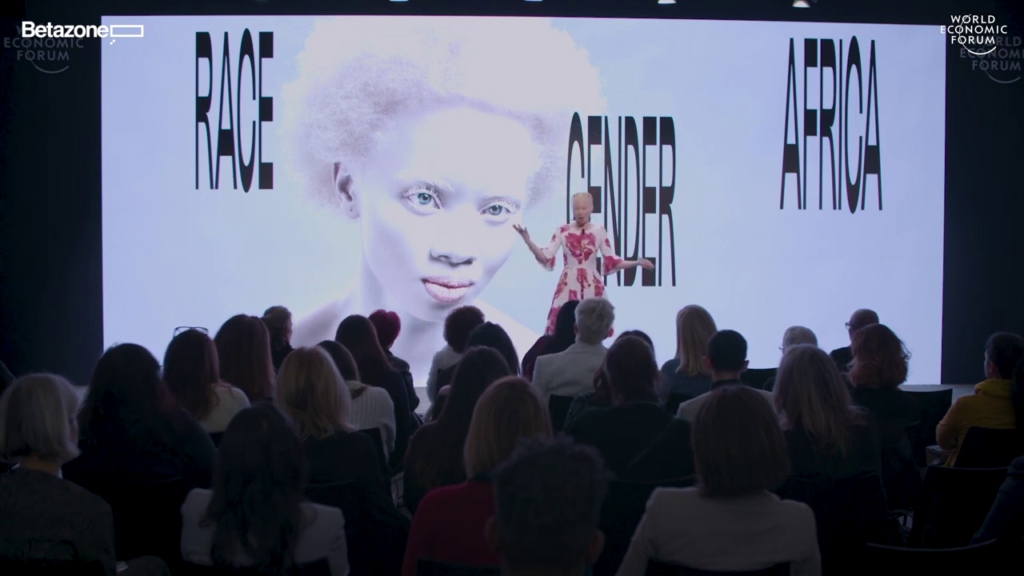
Now, I’m going to give you a couple of examples. Race. “So, we would love to sign you. But you would look more accessible with like a long brown weave.” Or, “Oh, uh, could we make her lips smaller?” Or, “I’m sorry, I just can’t work with hair like this.”
Now, the nuanced attacks that I received were not just limited to race, because being a woman came with its own set of challenges. Gender. “Hi. So I know that I’m asking you to do this pretty late on set, but could you just put on this shirt. It’ll show a little bit of your nipples but…it’ll be tastefully done.” Or, “Relax. He’s just asking you to put on boob pasties. I mean you’re gonna seriously have to stop being so conservative.”
Now, to be clear, female sexuality and sensuality are to be celebrated. But from a place of bodily agency and body sovereignty, not from a place of expectation or obligation.
Next, Africa. “Could you tell us about the albino killings in Africa? What are some of the superstitions albino Africans have about albinos?” Or, “Do you consider yourselves warriors for your cause?” Or, “Could you let us know about the most frightening experience in your country?”
Now, I would read about Africa as if it is one big country. Not a continent with complexity and variation. I was consistently asked the same questions, to confirm the same narrative, indiscriminately, without much context given. And I realized that the much, much, much-needed albinism awareness was being invaded by enduring stereotype about what Africa is singularly understood to be: a place of fear, violence, struggle, and witchcraft…overlooking balancing narratives about family, community, progress, and culture.
I felt as though the environment was closing in on me, and that it was not ready to receive or adapt to difference—not in content, or in form. I felt like there were just too many stereotypes to juggle, too much prejudices to counter, too much racial and gendered history that was playing out in my everyday activities in my career.
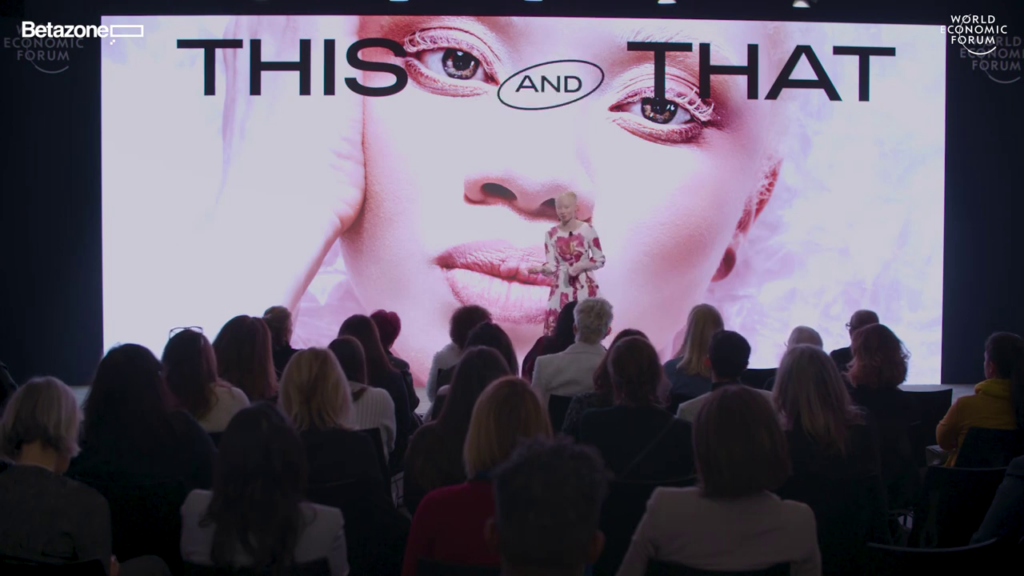
Now, as a black, African, woman, with albinism, my very existence attracts social and political consequences. And all of it is significant for me. It is my world between worlds. In the same way I could not just pick one doll, I cannot just pick one identity. An inclusive culture accepts that it is not this or that. It is this and that.
The combination of our many worlds is a cultural resource, and if I’ve learned anything from my various experiences it is that we are a product of culture. We are a result of all the narratives and the cultural constructs that are projected onto our bodies, however we can reshape these narratives and become producers of culture.
Now, I’ve learned to use my multiplicity as a cultural asset. In that I choose projects that give me various access points to humanity through my multiple identities. And I find that projects that allow for consultation, shared control over representation, cocreation, authenticity, and allow for an embracing of multifaceted-ness, these projects leave an undeniable cultural footprint. But most importantly, they bring us closer to inclusive narratives and cultural reform. Now the next projects that I’m going to share with you are my collaborations which are kind of like my favorite anecdotes.
Now the first one is the Audi #untaggable campaign which partnered with Ogilvy. And the campaign was about challenging stereotypes and singular identity myths.
https://www.youtube.com/watch?v=lUKATaUQz1A
Now that was the award-winning #untaggable campaign.
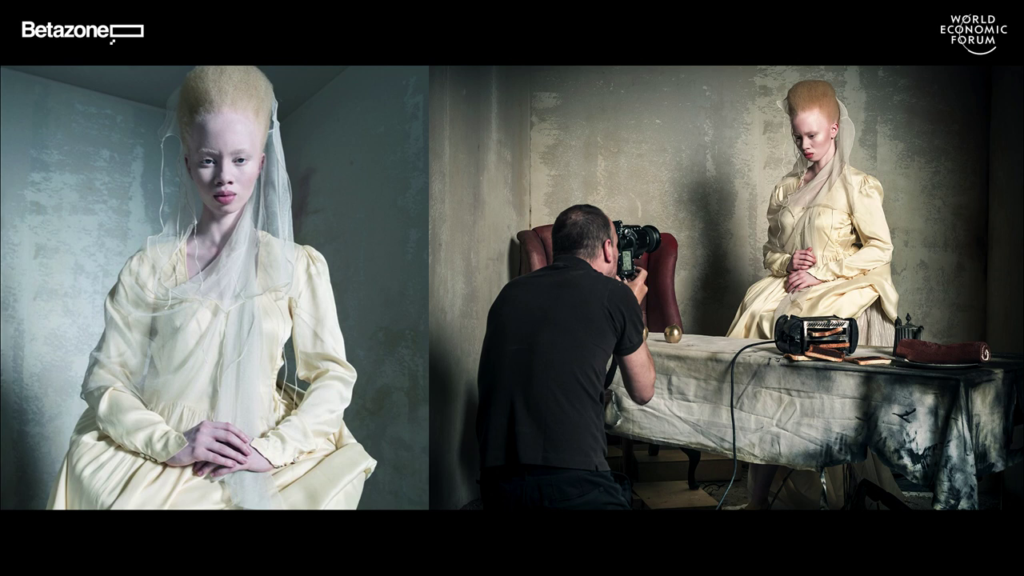
And the next one was the Pirelli calendar, an all-cast calendar that really spoke about race and representation but also it was a historical adaptation of Alice in Wonderland.
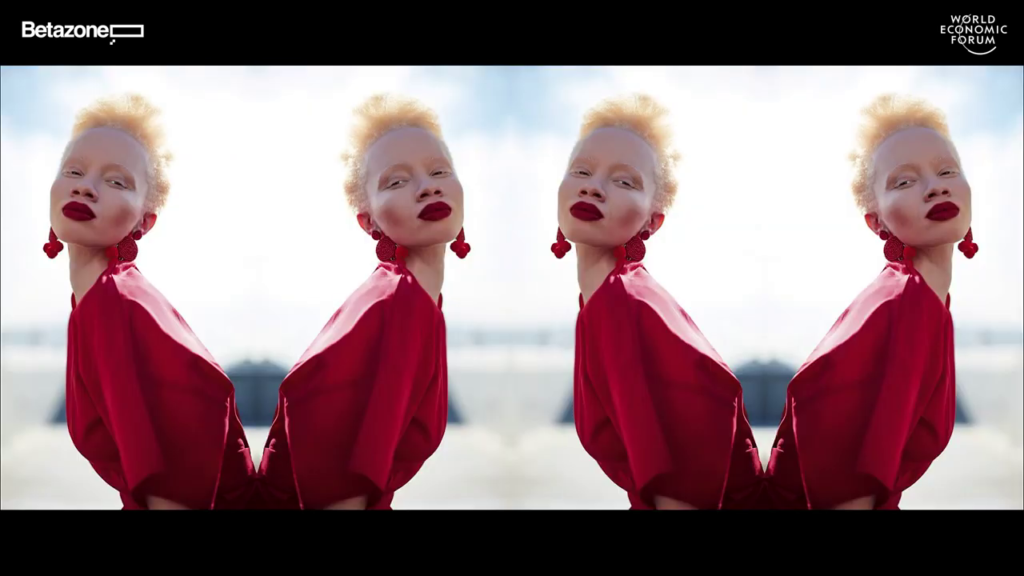
And the next one was the Foschini campaign. This campaign spoke about women’s solidarity as well as affirmations, and it was called the “I am all woman” campaign.
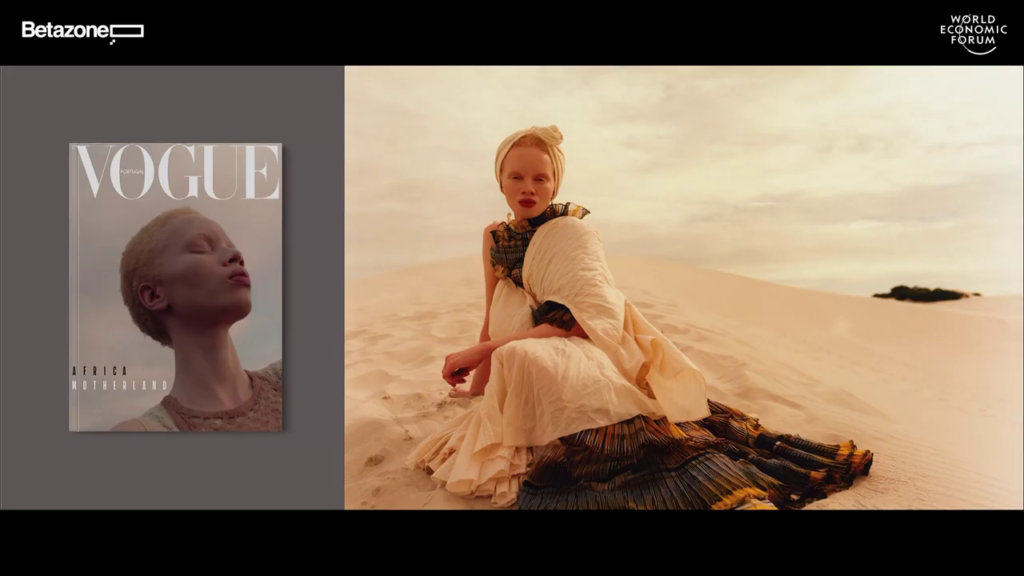
And the last one I’d like to share with you is Vogue, which not only made history in terms of albinism and representation, but also celebrated the beauty of African fashion and luxury.
Now, looking back at the doll test, the gap that I inhabited within the test reminded me that there’s always a world between worlds. And that an unseen existence does not amount to an absent existence. And the reminder manifested in a…trying but informative media journey that asserted that an absence of representation does not translate to an absence of life, of talent, of perspective, of complexity, and of value.
Now, if we responsibly access one another’s humanity by redesigning cultural environments and narratives to being more inclusive, then the better our chances are in building an expansive cultural economy, but also building a future of that dares to be large enough to see all of us participate in it. Thank you.
